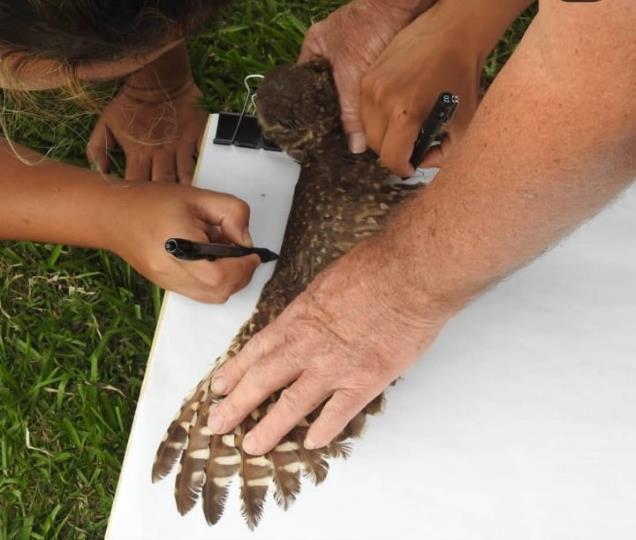Angie Paola Penagos López
The Atlantic Forest is one of the world’s five leading biodiversity hotspots. However, as a consequence of the increase in deforestation, currently there is only the 7.6% of the original cover. This situation especially affects endemic owls, cause rapid their populations decline, raising their extinction risk, due to their range is limited, and they are tied to habitat characteristics. Our goal is understanding habitat occupancy of owls during breeding season in the Atlantic Forest, with emphasis on endemic and threatened species. Our results will help to identifying priority areas for conservation and designing monitoring programs for owls in this biome.

The Atlantic Forest biome is one of the world’s five leading biodiversity hotspots. However, as a consequence of the rapid increase in deforestation, currently there is only the 7.6% of the original cover, with most remnants being isolated and heavily disturbed fragments. The region still harbours some 8,000 endemic species. Twenty-three owl species (Strigiformes) have been recorded in the Atlantic forest, representing the largest number among the Brazilian biomes. Owls are among the most sensitive groups to human disturbance, because they are top predators that occur at low densities and have long generation times. Therefore, loss and degradation of their habitat as result of deforestation, forest fragmentation, and human population growth, cause rapid population decline, raising their extinction risk. Endemic species suffer from these habitat disturbances, as their range is limited, and they are tied to habitat characteristics that increase fitness and facilitate occupancy, survival, and reproduction.
With it in mind, we decided to develop a conservation biology research focused on owls in the Atlantic Forest, with emphasis on three endemics (Rusty-barred Owl, Long-tufted Screech-owl, and Tawny-browed Owl), whose populations are declining. This project arose out of the need to better understanding detectability and habitat occupancy of owls in this biome, with special interest on assessing how land cover and human disturbance affect their habitat occupancy during breeding season. Ultimately, our results will help to identifying priority areas for conservation and designing monitoring programs for owls in the Atlantic forest, fulfilling some recommendations of the Brazilian National Action Plan (NAP) for the conservation of birds of prey and management plan for the Biosphere Reserve of the Atlantic Forest.